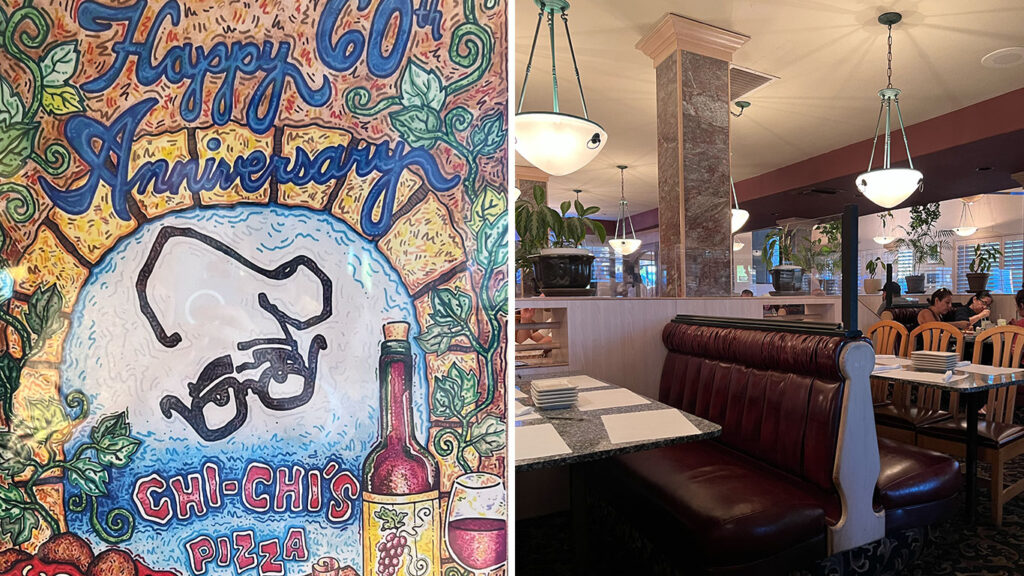Table of Contents:
- Overview of Living in Santa Clarita
- Cost of Housing in Santa Clarita
- Everyday Expenses and Utilities
- Employment Opportunities and Income
- Budgeting to Afford Life in Santa Clarita
- Key Takeaways
- Conclusion
- Frequently Asked Questions
Thinking about moving to Santa Clarita? With its picturesque scenery, family-friendly atmosphere, and proximity to Los Angeles, it’s no wonder this city is a popular choice. But before making the leap, you’re probably asking yourself the big question: can you afford to live there?
Santa Clarita offers a mix of suburban charm and city convenience, but like any desirable area, the cost of living can add up quickly. From housing prices to everyday expenses, understanding what it takes to live comfortably here is crucial. Whether you’re planning to rent or buy, knowing your budget and priorities will help you make an informed decision.
So, how does Santa Clarita fit into your financial picture? Let’s explore the key factors that’ll determine if this vibrant city aligns with your lifestyle and wallet.
Overview Of Living In Santa Clarita
Santa Clarita offers a mix of suburban lifestyle and urban proximity, making it an attractive place to live. The city is the third-largest in Los Angeles County, with a population of over 228,000 as of 2023. Its combination of family-friendly neighborhoods, parks, and recreational activities enhances its livability.
Housing costs vary significantly based on location and property type. The median home price is approximately $720,000, while monthly rents average around $2,600. Utilities, including electricity, water, and internet, typically range from $200 to $300 per month.
Transportation expenses are influenced by car usage. Gas prices in California exceed the national average, costing about $5.00 per gallon. Public transportation, such as buses and Metrolink trains, provides alternative commuting options at lower costs.
Healthcare access in Santa Clarita is high, with several clinics and hospitals in the area. Medical expenses align with California’s average, with health insurance premiums averaging $475 monthly for an individual.
Food costs depend on dietary habits and dining preferences. Groceries for a family of four cost about $1,000 monthly, while dining out averages $15 to $25 per meal at local restaurants.
Cost Of Housing In Santa Clarita
Housing expenses in Santa Clarita are a significant factor in determining affordability. Understanding the rental and home-buying markets helps you assess your financial readiness for living in this city.
Rental Market Analysis
Monthly rent averages $2,600 for a standard two-bedroom apartment in Santa Clarita. Rental costs vary based on location, size, and amenities.
For instance, newer complexes in areas like Valencia may charge above $3,000, while older units or smaller apartments in Canyon Country can price closer to $2,000. Studios and one-bedroom units typically fall between $1,800 and $2,200.
Keep in mind, security deposits and additional fees for utilities or parking may apply.
Buying A Home: What To Expect
The median home price in Santa Clarita is around $720,000 as of 2023. Expect price variations depending on the neighborhood, with upscale areas like Stevenson Ranch exceeding $800,000 and more affordable neighborhoods like Newhall starting closer to $600,000.
Down payment requirements range from 3% to 20% of the purchase price, depending on your loan type. Property taxes, approximately 1.25% annually in California, add to ownership costs.
Don’t overlook homeowner’s insurance and potential HOA fees, which can impact your monthly budget.
Everyday Expenses And Utilities
Understanding everyday expenses in Santa Clarita is crucial for assessing affordability. Key factors include groceries, transportation, and utility costs, which vary based on lifestyle and household size.
Groceries And Dining Out
Grocery costs in Santa Clarita align with California’s average. Expect to spend around $1,000 monthly for a family of four, depending on shopping habits and dietary needs.
Chains like Trader Joe’s, Sprouts, and Walmart offer a range of pricing options for essentials. Dining out costs typically fall between $15 and $25 per person at mid-range restaurants, with fast-food options averaging $8 to $12 per meal.
Popular local eateries may charge slightly more, particularly in popular areas like Valencia.
Transportation Costs
Transportation expenses depend on whether you rely on personal vehicles or public options. Gasoline costs around $5.00 per gallon as of 2023, making weekly refueling a significant expense for drivers, especially with long commutes to Los Angeles. Car insurance averages $150 per month but varies based on coverage, driving history, and vehicle type. Public transportation, including Santa Clarita Transit buses and Metrolink trains, offers a more affordable alternative. Monthly transit passes cost approximately $100, making them a practical choice for budget-conscious residents.
Utility Bills And Services
Monthly utility bills in Santa Clarita range from $200 to $300 for typical households, covering electricity, water, and natural gas. Electricity costs increase in summer due to air conditioning usage, especially during heatwaves. Internet services average $60 to $80 per month, depending on the provider and speed. Trash collection is often included in rental fees, though homeowners may pay an additional $20 to $40 monthly for waste services.
Employment Opportunities And Income
Santa Clarita offers diverse employment opportunities and competitive income levels for residents. Understanding salary ranges and key industries is essential for evaluating affordability in the area.
Average Salaries In Santa Clarita
The average annual salary in Santa Clarita is approximately $65,000, based on job roles and experience. Entry-level positions typically offer between $30,000 and $45,000, while mid-level roles average $60,000 to $80,000 annually. Senior-level and specialized professions, such as software engineering or healthcare management, often exceed $100,000 per year. Part-time positions in retail or food services range between $14 and $18 per hour.
Popular Industries And Job Markets
Santa Clarita’s economy thrives on several key industries. The entertainment sector, heavily influenced by Los Angeles, offers roles in film production, set design, and digital media at companies like Disney and Netflix. Healthcare is another robust field, with institutions like Henry Mayo Newhall Hospital employing medical professionals, administrative staff, and technicians.
Education is also a prominent employer, with opportunities in the William S. Hart Union High School District and College of the Canyons. Retail and hospitality provide numerous roles, especially near shopping centers like Westfield Valencia Town Center. Lastly, technology and manufacturing industries present growing opportunities, particularly in areas like aerospace engineering and IT support.
Budgeting To Afford Life In Santa Clarita
Achieving financial stability in Santa Clarita depends on effective budgeting and understanding your costs. By focusing on housing savings and efficient expense management, you can make living in this city more affordable.
Tips For Saving On Housing
Prioritize neighborhoods that match your budget without sacrificing safety or accessibility. In areas like Canyon Country, you can find more affordable rental options starting around $2,000 monthly, compared to Valencia, where newer developments exceed $3,000. Opt for co-living arrangements to reduce rent; sharing a two-bedroom apartment could lower overall costs by splitting the $2,600 average monthly rent.
For homebuyers, research first-time buyer programs offered by California to reduce initial costs. Target homes with lower HOA fees or opt for properties without such fees to minimize recurring expenses. Consider smaller homes or fixer-uppers around the $600,000 price range to stretch your budget, as these cost significantly less than homes in affluent neighborhoods like Stevenson Ranch.
Connecting with experienced and professional agents can make all the difference in finding the right property that fits your budget and lifestyle. Their local expertise and personalized guidance ensure you get the most value for your investment.
Managing Monthly Expenses
Track all recurring expenses to identify areas for cost reduction. For groceries, plan meals and shop strategically to keep costs for a family of four close to the $1,000 monthly average. Cook at home more often to avoid dining costs of $15 to $25 per meal per person.
Use public transportation options such as Metrolink passes, which cost around $100 monthly, to reduce fuel and car expenses. For those who drive, plan trips efficiently to mitigate gas costs, which are around $5 per gallon, and ensure you’re maintaining your car to avoid unexpected repairs.
Lower utility bills, which average $200 to $300 per month, by conserving energy. Install energy-efficient appliances or reduce usage during peak hours. For internet services, compare providers to secure plans within the $60 to $80 range. Use budget-friendly health insurance options that align with California’s monthly average of $475 per individual to maintain medical expense predictability.
Key Takeaways
- Santa Clarita offers a mix of suburban charm and urban proximity, but the high cost of living makes budgeting essential for affordability.
- Housing is the largest expense, with median home prices around $720,000 and average monthly rent at $2,600, depending on the location and property type.
- Everyday costs, such as utilities ($200–$300/month), groceries ($1,000/month for a family of four), and gas ($5/gallon), can quickly add up.
- Public transportation options like Metrolink passes (~$100/month) provide a budget-friendly alternative to the high costs of driving.
- Employment opportunities in industries like entertainment, healthcare, and education offer average salaries of $65,000/year, with variation based on roles and experience.
- Strategic budgeting, such as choosing affordable neighborhoods like Canyon Country or utilizing cost-saving tips, can help make living in Santa Clarita more manageable.
Conclusion
Figuring out if living in Santa Clarita fits your budget comes down to your financial situation, lifestyle, and priorities. With its family-friendly vibe and convenient location near Los Angeles, the city offers a fantastic quality of life, but it’s important to plan ahead to manage the costs. Taking the time to understand your budget and plan carefully can help make living here a reality.
By evaluating housing options, everyday expenses, and potential income opportunities, you can determine if Santa Clarita aligns with your financial goals. With the right strategies, you can make living in this vibrant city a reality while maintaining financial stability.
Check out available listings and contact Holly Thompson to make your move to Santa Clarita smooth and exciting!
Frequently Asked Questions
1. Is Santa Clarita a good place to live for families?
Yes, Santa Clarita is highly regarded as family-friendly due to its safe neighborhoods, excellent schools, and abundance of parks and recreational activities. Families also enjoy the sense of community and amenities that cater to children and teens.
2. How much does it cost to rent in Santa Clarita?
The average rent for a two-bedroom apartment in Santa Clarita is around $2,600 per month. Newer complexes may charge over $3,000, while older units in areas like Canyon Country can be closer to $2,000.
3. What is the median home price in Santa Clarita?
The median home price in Santa Clarita is approximately $720,000. Affordable options start around $600,000, while upscale neighborhoods can exceed $800,000.
4. How much should I budget for utilities in Santa Clarita?
Utility costs in Santa Clarita typically range from $200 to $300 per month, covering essentials like electricity, water, and gas. Internet services cost an additional $60 to $80 monthly.
5. What are typical transportation expenses in Santa Clarita?
If you use a car, gas prices are around $5.00 per gallon, with car insurance averaging $150 monthly. Public transportation is more affordable, with monthly passes costing about $100.
6. Are there job opportunities in Santa Clarita?
Yes, Santa Clarita offers job opportunities in industries like entertainment, healthcare, education, retail, and technology. Average salaries range from $30,000 for entry-level jobs to over $100,000 for senior-level roles.
7. How much does food cost in Santa Clarita?
Grocery costs for a family of four are about $1,000 monthly. Dining out typically costs $15 to $25 per meal, depending on the restaurant.
8. What are some affordable neighborhoods in Santa Clarita?
More affordable neighborhoods in Santa Clarita include parts of Canyon Country and Newhall, where housing costs tend to be lower compared to Valencia or Stevenson Ranch.
9. Are there budgeting strategies for living in Santa Clarita?
To save money, consider budgeting for groceries, dining out, and utilities. Use public transportation, prioritize energy conservation, explore co-living arrangements, and research first-time homebuyer programs for housing.
10. Is public transportation available in Santa Clarita?
Yes, Santa Clarita offers public transportation options like buses and Metrolink trains. Monthly transit passes cost approximately $100 and provide a more affordable alternative to driving.




